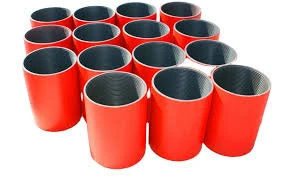- Afrikaans
- Albanian
- Amharic
- Arabic
- Armenian
- Azerbaijani
- Basque
- Belarusian
- Bengali
- Bosnian
- Bulgarian
- Catalan
- Cebuano
- Corsican
- Croatian
- Czech
- Danish
- Dutch
- English
- Esperanto
- Estonian
- Finnish
- French
- Frisian
- Galician
- Georgian
- German
- Greek
- Gujarati
- Haitian Creole
- hausa
- hawaiian
- Hebrew
- Hindi
- Miao
- Hungarian
- Icelandic
- igbo
- Indonesian
- irish
- Italian
- Japanese
- Javanese
- Kannada
- kazakh
- Khmer
- Rwandese
- Korean
- Kurdish
- Kyrgyz
- Lao
- Latin
- Latvian
- Lithuanian
- Luxembourgish
- Macedonian
- Malgashi
- Malay
- Malayalam
- Maltese
- Maori
- Marathi
- Mongolian
- Myanmar
- Nepali
- Norwegian
- Norwegian
- Occitan
- Pashto
- Persian
- Polish
- Portuguese
- Punjabi
- Romanian
- Russian
- Samoan
- Scottish Gaelic
- Serbian
- Sesotho
- Shona
- Sindhi
- Sinhala
- Slovak
- Slovenian
- Somali
- Spanish
- Sundanese
- Swahili
- Swedish
- Tagalog
- Tajik
- Tamil
- Tatar
- Telugu
- Thai
- Turkish
- Turkmen
- Ukrainian
- Urdu
- Uighur
- Uzbek
- Vietnamese
- Welsh
- Bantu
- Yiddish
- Yoruba
- Zulu
Stainless Steel Couplings for Reliable Pipe Connections in Various Applications
Understanding Coupling Stainless Steel Fittings A Comprehensive Guide
Stainless steel fittings play an essential role in various piping systems, ensuring secure and reliable connections. Among the numerous types available, coupling stainless steel fittings stand out for their versatility and durability. This article delves into the various aspects of coupling stainless steel fittings, including their types, applications, benefits, and installation considerations.
What are Coupling Stainless Steel Fittings?
Coupling fittings are designed to connect two pieces of pipe, allowing for a seamless flow of liquids or gases. These fittings can be found in various materials; stainless steel is particularly favored due to its robust properties. Stainless steel is resistant to corrosion, temperature fluctuations, and pressure, making it ideal for both industrial and residential applications.
Types of Coupling Stainless Steel Fittings
There are primarily two types of coupling stainless steel fittings straight couplings and reducing couplings.
1. Straight Couplings As the name suggests, these fittings join two pipes of the same diameter. They are commonly used in plumbing, HVAC systems, and fuel lines, providing a reliable connection for uninterrupted flow.
2. Reducing Couplings These fittings allow the connection of two pipes of different diameters. By transitioning from a larger pipe to a smaller one (or vice versa), reducing couplings help accommodate varying flow requirements in a system.
Both types of couplings can be further categorized based on their shape and design, including threaded, socket-weld, and hygienic designs, where hygiene is a critical consideration, such as in food processing applications.
Applications of Coupling Stainless Steel Fittings
Coupling stainless steel fittings have a wide range of applications across different industries
- Manufacturing In factories, these fittings are used in systems that transport water, steam, and hydraulic fluids. - Construction They are vital in plumbing systems, ensuring the secure connection of pipes in residential and commercial buildings. - Oil and Gas Their durability and resistance to harsh conditions make them suitable for transporting hydrocarbons and gases. - Food and Beverage Stainless steel’s non-reactive nature is essential in the food industry to prevent contamination and ensure compliance with health regulations.
coupling stainless steel fitting

Benefits of Using Coupling Stainless Steel Fittings
1. Corrosion Resistance One of the primary advantages of stainless steel is its resistance to rust and corrosion. This property extends the lifespan of piping systems and minimizes maintenance costs.
2. Temperature Tolerance Stainless steel can withstand high temperatures, making these fittings suitable for hot water systems and steam lines.
3. Strength and Durability Coupling fittings made from stainless steel offer high tensile strength, ensuring they can handle significant pressure without failure.
4. Ease of Installation Most coupling fittings are designed for ease of installation, with options for threaded or weld-on processes that accommodate different levels of expertise.
5. Aesthetic Appeal Beyond their functional benefits, stainless steel fittings have a polished, professional appearance that enhances the overall look of installations.
Installation Considerations
While coupling stainless steel fittings are relatively easy to install, proper procedures should be followed
- Sizing Ensure the correct size of the coupling to match the pipes being connected. Mismatched sizes can lead to leaks and system failures. - Preparation Clean the pipes before installation to remove any debris, which can compromise the seal. - Alignment Properly align the pipes to avoid stress on the fittings, which can lead to premature failure. - Sealing Use appropriate sealing materials if required, especially in threaded connections, to prevent leaks.
Conclusion
Coupling stainless steel fittings are integral components in various piping systems, offering security, durability, and versatility. Their numerous applications across industries—combined with benefits like corrosion resistance and high strength—make them a preferred choice for many professionals. Whether for a simple home plumbing project or a complex industrial installation, understanding the role and characteristics of coupling stainless steel fittings is crucial for ensuring optimal performance and longevity of piping systems.
Incorporating these fittings into your projects can lead to enhanced safety and reliability, underscoring their importance in modern infrastructure and industry.
-
Tubing Pup Joints: Essential Components for Oil and Gas OperationsNewsJul.10,2025
-
Pup Joints: Essential Components for Reliable Drilling OperationsNewsJul.10,2025
-
Pipe Couplings: Connecting Your World EfficientlyNewsJul.10,2025
-
Mastering Oilfield Operations with Quality Tubing and CasingNewsJul.10,2025
-
High-Quality Casing Couplings for Every NeedNewsJul.10,2025
-
Boost Your Drilling Efficiency with Premium Crossover Tools & Seating NipplesNewsJul.10,2025







